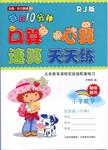题目内容
Pieces of bamboo or wood ____ books between 2nd and 5th century AD.
A. used to formed B. used to form
C. were used to form
D. used to be forming
C

练习册系列答案
 每日10分钟口算心算速算天天练系列答案
每日10分钟口算心算速算天天练系列答案
相关题目
题目内容
Pieces of bamboo or wood ____ books between 2nd and 5th century AD.
A. used to formed B. used to form
C. were used to form
D. used to be forming
C

 每日10分钟口算心算速算天天练系列答案
每日10分钟口算心算速算天天练系列答案